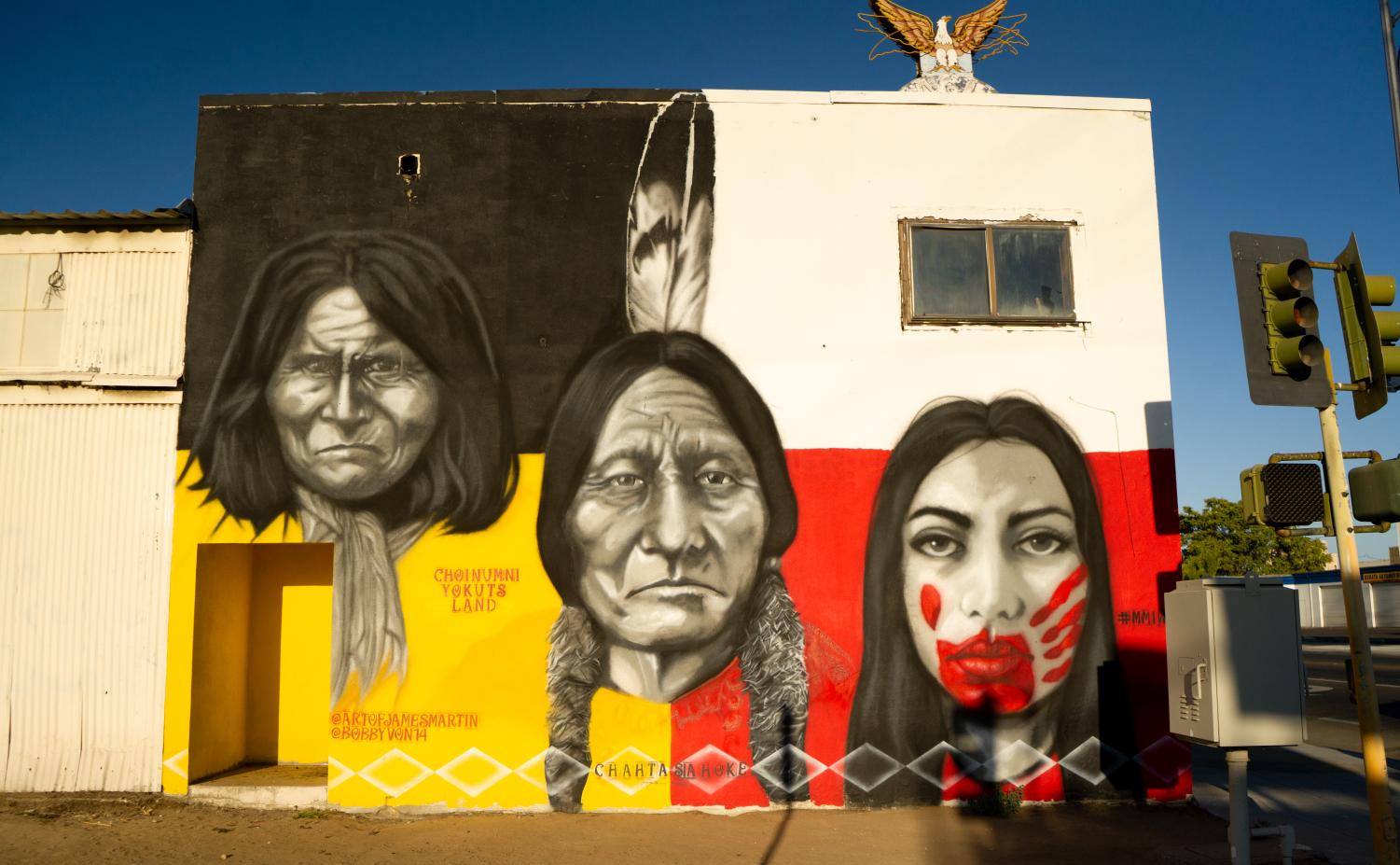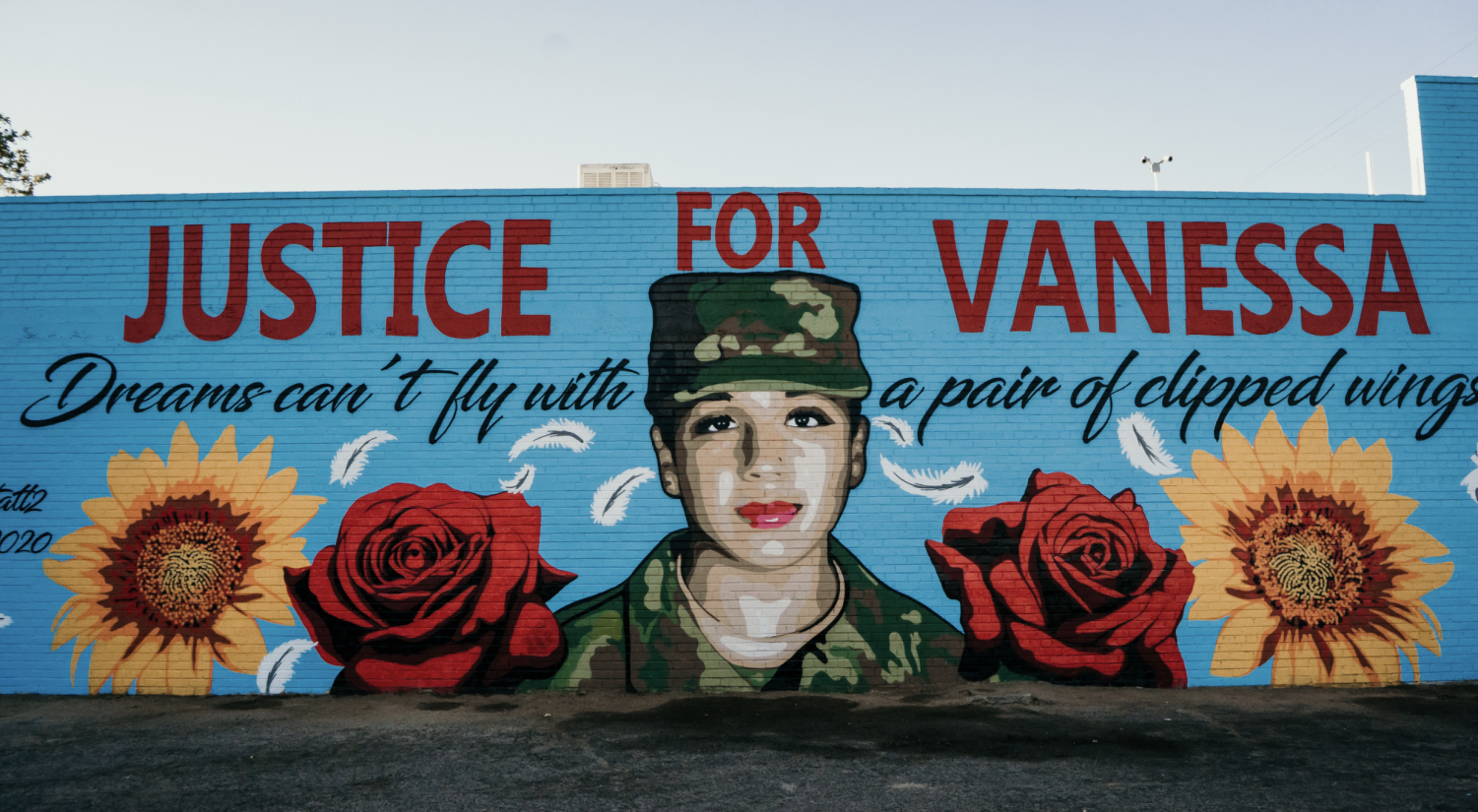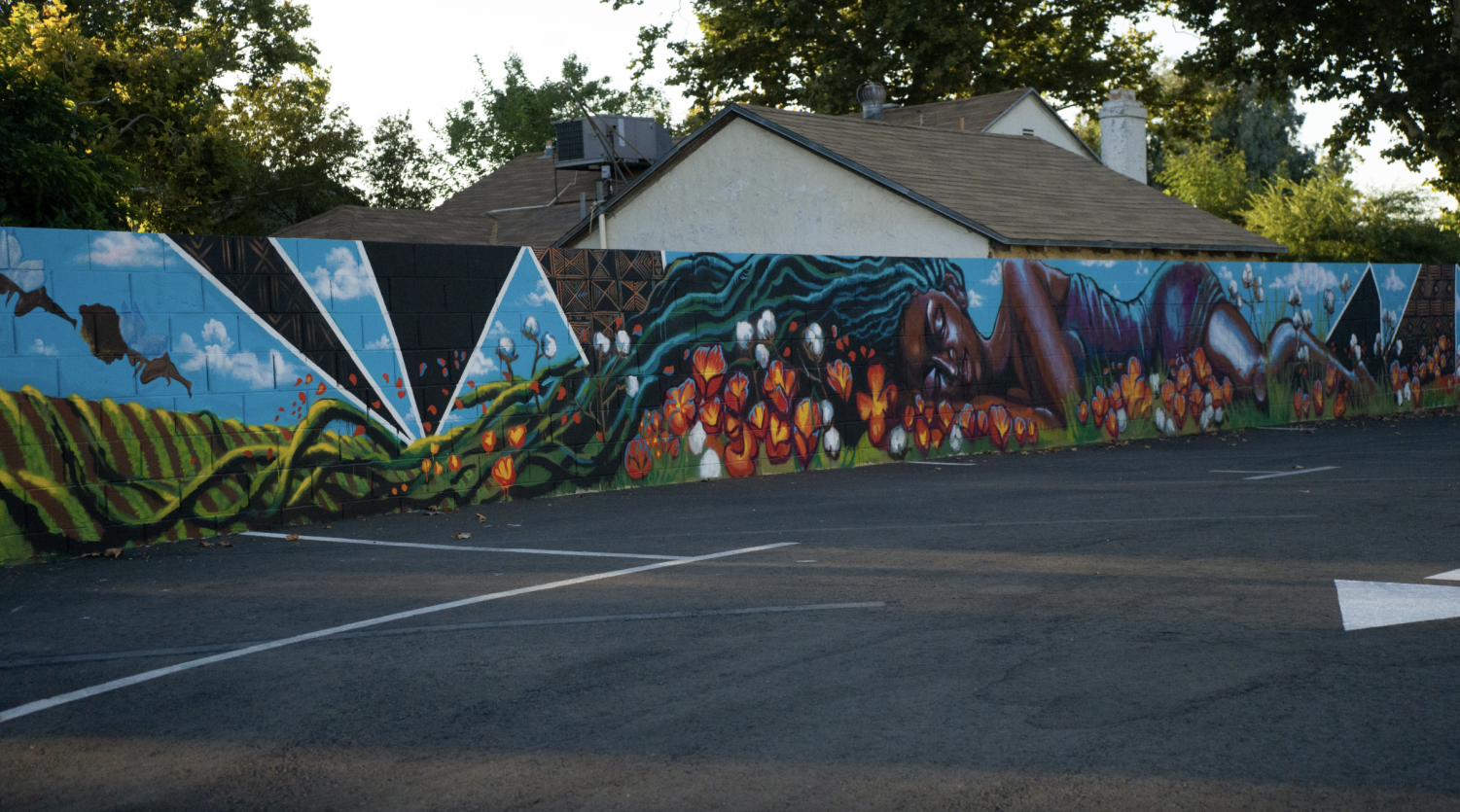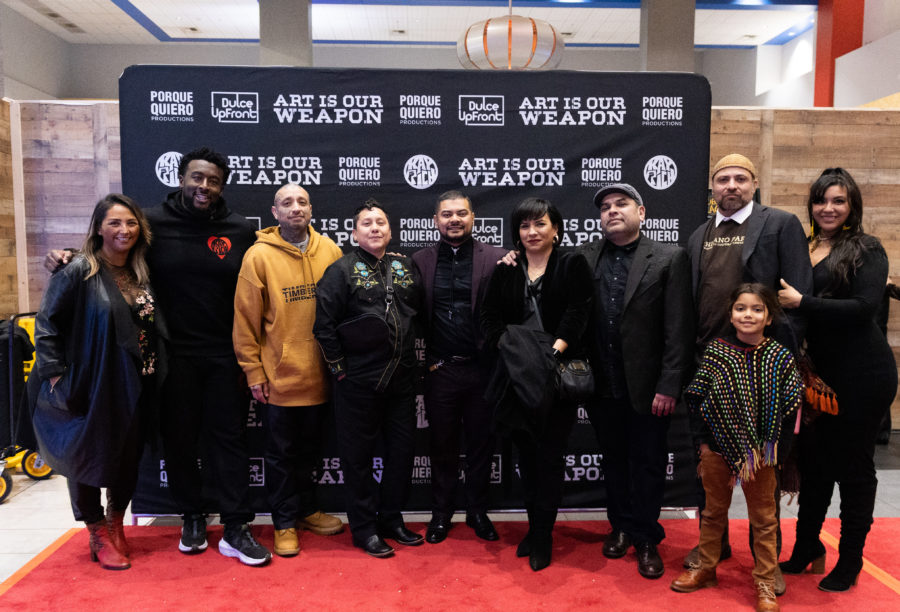Community documentary ‘Art Is Our Weapon’ premieres at Maya Cinemas
“Art Is Our Weapon” premiered at Campus Pointe’s Maya Cinemas on Feb. 26, 2023. (Carlos Rene Castro/ The Collegian)
Samuel Contreras, Fresno State professor and documentary filmmaker, premiered his latest film, “Art Is Our Weapon,” at Maya Cinema, filling up a 200-seat auditorium, on Feb. 26.
The 25-minute film showcased the creation of “The Lift Every Voice” mural tour. Led by Dulce Upfront and DJ Kay Rich, 66 local artists painted 14 murals in Fresno and advocated for social justice through the arts.
“Art is a weapon, a weapon of protesting, but also a weapon to heal, especially during that time in American history,” Contreras said.
Shortly after the premiere of the film, a panel discussion with Contreras, Caleb Duarte, Audia Yvonne Dixon, Paige Mason and D’Aungillique Jackson, led by DJ Kay Rich, talked about the importance of Black women representation in the Central Valley. They also explained the complications of working with the City of Fresno to organize the Black Lives Matter protest.
The birth of the mural tour derived from the Black Lives Matter Movement, a nationwide protest to call attention to racism and discrimination against Black people.
Locally, on May 31, 2020, the Fresno State NAACP and community members held a peaceful demonstration in Downtown Fresno to voice their frustration with the unjust murder of George Floyd.
“We actually planned that protest in less than 48 hours,” said Jackson, former Fresno State Associated Students Inc. president, during the panel discussion. “We were so moved by what we were seeing as young Black people. It was almost like we didn’t have a choice.”
Ome Quetzal Lopez, a local activist and co-founder of DulceUpfront, pitched the idea to DJ Kay Rich to create a mural to bring the Black Lives Matter Movement in Fresno. Through donations such as paint, money and time from participating artists, murals started blooming in Fresno. The final product was “The Lift Every Voice” mural tour.
Mural by mural, Contreras was on scene with the artists and community members, recording the process of the creation of the murals with his camera. The thought of creating a film never crossed the mind of the Fresno native. According to Contreras, he only touched the footage from the murals a year later. In his hard drive, Contreras had sufficient footage to create a documentarian masterpiece like “Art Is Our Weapon.”
“Walk With Your Ancestors,” a mural by Choctaw artists Bobby Von Martin and James Martin, was one featured in the film. The mural highlighted Native American imagery with recognizable people such as Sitting Bull, Geronimo and a woman with a red handprint across her face. The woman represents missing indigenous women, according to the artists.

In the background of the three figures are the four sacred colors (black, white, yellow and red) that represent concepts such as the four directors north, south, east, west and four paths. When Native Americans pray or perform sacred rituals, they use the four directions in their rituals.
Despite having various cultures and beliefs, the artists intended to create a mural that all Native Americans in the community could recognize, like the four sacred colors.
“We wanted to put something that wasn’t specific to our tribe,” James said. “But something that can be seen by anybody who’s Native [American], and they can appreciate it.”
With the assistance of their car headlights to illuminate the mural while painting, and their kids helping roll paint, the Martin brothers completed their mural on a tight deadline. From start to finish, the mural was created in eight days. Under the hot summer Fresno sun, Bobby and James painted the mural daily in the early morning hours until the weather was too hot. They would return that evening when the sun set to continue working on their mural.
A community member shared a story with the brothers that embodied art’s importance and impact on the community.
“A woman from the community had a premature baby, so the baby was in the hospital. So, on the way to the hospital, she would drive by our mural,” James said. “She shared with us that the mural gave her strength every day to go see her baby and to know that they were going to be okay.”
On July 18, 2020, James and Bobby held a community gathering to unveil the mural at 575 Divisadero St. During the gathering, the brothers gave away $800 worth of art supplies to the youth and the Native American community, according to Bobby. To pay homage to their elders, local community members and Native American communities from San Francisco and Los Angeles gathered in unison to pray and sing in front of the mural.
“When I say, ‘walk with your ancestors,’ it means to walk like the old ones,” Bobby said. “Meaning learning our language, learning our ceremonies [and] learning our traditions.”
Omar “Super” Huerta, muralist and tattoo artist, painted a mural honoring the life of U.S. Army soldier Vanessa Guillen, a soldier who went missing from a military base in Fort Hood in April 2020. She was killed and her remains were found in a shallow grave at the military base.

The mural was completed on July 18, 2020, in which community members gathered at a candlelight vigil at the mural site honoring Guillen.
Months after the mural’s completion, it was painted over by the property’s new owner. Huerta is healing from the devastating news two and a half years later.
“It caught me off guard,” Huerta said. “I’m still not over it to be honest with you.”
The local muralist believes that he won’t receive the answer why the owners covered it up, but he is optimistic about the future by shifting his creative energy to new endeavors.
Huerta enjoyed the storyline of “Art Is Our Weapon” and hopes it will inspire more artist projects in the community.
“I hope that there’s more unity, and I hope that there’s more murals coming our way,” Huerta said.
The “Lift Every Voice” mural tour also highlighted the lack of representation of Black women artists in the Central Valley.
Painted by Black women artists Paige Mason, Audia Yvonne Dixon and Vishinna Crowsmith, “Know Your Soil Grow In Earth Love Your Roots and Test” is a long mural at 367 N. First St.

The all-women crew intended to bring African traditions to the Central Valley because of the lack of African art in the region. The mural displays African designs, including mud cloth, a handmade Malian fabric created by painting with fermented mud. In the mural’s center is a Black woman peacefully resting her body in a field of flowers.
During the panel discussion, Mason and Dixon emphasized the importance of more representation of Black women in the community. According to the U.S Census Bureau, Black or African American people make up 6.8% of the population in Fresno, making Black people one of the most underrepresented races in Fresno.
In the Central Valley, Black artists have their backs against the wall.
The African American Historical and Cultural Museum of the San Joaquin Valley is the only museum focusing on African American culture in the Central Valley. After a three-year hiatus due to the pandemic, the museum recently opened its doors to artists and visitors in an exhibition highlighting Black History Month.
However, Dixon and Mason are optimistic that films like “Art Is Our Weapon” can spark more opportunities for Black artists in the community, especially Black women artists.
During the panel discussion, Mason said she is working closely with the African American museum to create a space for Black artists. She is currently one of the leading educators at the museum teaching history of African American art on Saturdays.
“We’re gonna be filling that creative space that Fresno needs,” Mason said. “Because we’re here.”
According to Contreras, Fresno State will host a screening of “Art Is Our Weapon” later this month.
Your donation will support the student journalists of Fresno State Your contribution will allow us to purchase equipment and cover our annual website hosting costs.




